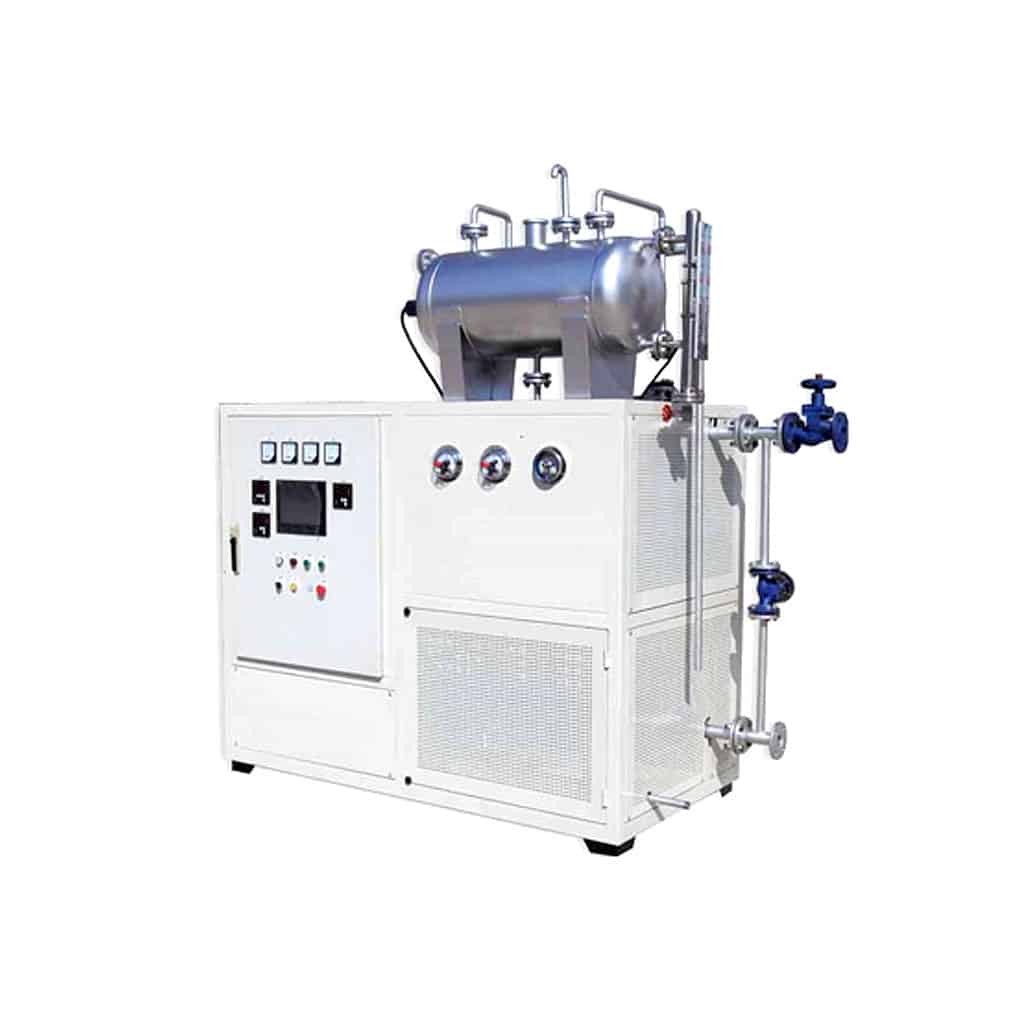In the field of industrial heating, electric thermal oil heaters https://8ruiyan.com/en/all-organic-heat-carrier-boilers/ are core equipment in many processes. They are valued for their even heating, precise temperature control, and energy efficiency. However, while we appreciate their performance, we must never overlook the foundation of their safe operation: Design Pressure. This seemingly simple parameter is the critical “lifeline” ensuring the safe, stable, and long-term operation of the entire thermal oil system.
Let’s explore why it is so important and what role it plays in standards and practice.

1. What is Design Pressure? It is NOT Working Pressure!
First, we must clarify a key concept: Design Pressure ≠ Working Pressure.
- Working Pressure: This is the highest pressure that may occur at the top of the boiler/system during normal operation. For thermal oil systems, the working pressure is usually low. It is mainly needed to overcome resistance in the pipes.
- Design Pressure: It is used to determine the thickness and mechanical strength of the boiler shell, pipes, and components at a corresponding design temperature. It is an inherent property of the equipment’s structure. It represents the safety limit of the pressure it can withstand.
2. Standards Define
In China, the design, manufacture, and inspection of electric thermal oil heaters must follow strict national standards. The most important one is “GB/T 17410-2008 Organic Heat Carrier Furnace”, along with related pressure vessel standards (like GB/T 150).
These standards set clear rules :
- It must not be lower than the maximum working pressure: This is the most basic rule.
- It must consider the safety valve set pressure: It must be higher than the pressure at which the safety valve opens. The safety valve is the last safety barrier. Its set pressure is usually a bit higher than the maximum working pressure. The design pressure must provide enough room for this margin.
- It is linked to the maximum working temperature:It is defined at a specific temperature (usually the maximum working temperature). Material strength decreases as temperature rises. The standards specify the required mechanical strength at the maximum working temperature.
In short, the standards ensure the equipment has a sufficient safety margin from the design stage.
3. The “Safety Lifeline”
- Prevents Overpressure and Explosion: This is the most direct and serious risk. If pressure rises abnormally due to pump failure, valve error, blockage, or oil decomposition, the equipment could rupture if the design pressure is too low. This could lead to a catastrophic explosion.
- Ensures Long-Term Structural Integrity: Equipment endures cyclic stress and thermal fatigue over time. A proper design pressure with a safety margin keeps the material within its elastic range. This prevents creep or fatigue damage, extending the equipment’s life.
- Provides a Basis for Safety Devices: The selection and setting of safety devices (like relief valves, rupture discs) depend directly on the design pressure. Knowing the design pressure limit is essential for choosing these “guardians” correctly. They must activate before pressure reaches a dangerous level.
4. User Guidelines: Safety Management Around Design Pressure
As a user or manager of the equipment, you must:
- Check the Nameplate: Find the nameplate on the boiler. It clearly states the “Design Pressure” and “Maximum Working Temperature”. These are your absolute operational limits.
- Set Safe Operating Pressure: Based on the design pressure and standards, work with the installer to define the system’s Maximum Working Pressure. Ensure daily operation pressure stays well below this value. Typically, the safety valve is set to open at a pressure slightly above the maximum working pressure, but always below the design pressure.
- Never Exceed Temperature/Pressure Limits: Overheating degrades the thermal oil faster. This can produce volatile components, causing abnormal pressure swings and overpressure. Controlling temperature is itself a key measure for pressure safety.
- Regularly Calibrate the Safety Valve: The safety valve is crucial for preventing pressure from exceeding the design limit. Have it calibrated regularly by a qualified organization, as required by safety codes. Ensure it functions sensitively and reliably.
- Ensure Professional Design/Installation: The system design (including boiler selection, piping, expansion tank height, venting) must be done by professionals. A poorly designed system can create local overpressure risks, even if the boiler itself has a high design pressure.
Sonuç
Design pressure is a cold number on a nameplate. But it is the essential safety soul within the electric thermal oil heater. It is not just an engineer’s calculation. It is a “safety string” that every operator and manager must keep taut in their mind.
Respecting the design pressure means respecting life. Strictly adhering to operational limits is the only way to ensure safe production.
We hope this blog helps you better understand this critical parameter and contributes to your safety management.
For further consultation, please contact our technical team for expert advice.
Whatsapp:86-19106101570
wechat:86-19106101570
email:fob@jsryan.com
